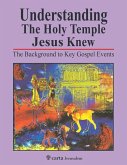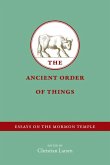This work first addresses the unity of 2 Maccabees, arguing that the epitome is a unified piece, separate from the prefixed letters. The author then explores the syntax and style of the epitome, noting rhetorical features and arguing that the work uses a nicety of syntax associated with classical, literary writers. The analysis of the narrative reveals a three-fold structure: a) 2 Maccabees 3 - the attack of Heliodorus; b) 2 Macc 4:1 - 10:9 - the profanation of the temple and its purification; c) 2 Macc 10:10 - 15:36 - the defense of the temple. Besides the theme of the defense of the temple, this analysis also revealed the theme defending the Jews against attacks that they are anti-social. Finally, the author explores the epitome in relation to Hellenistic historiography. He argues against the notion that the epitome of 2 Maccabees belongs to the genre of 'pathetic history, ' and instead demonstrates that the work belongs to the sub-genre of the defense of a temple by its god.
Hinweis: Dieser Artikel kann nur an eine deutsche Lieferadresse ausgeliefert werden.
Hinweis: Dieser Artikel kann nur an eine deutsche Lieferadresse ausgeliefert werden.




![The True Temple [microform]: or, The Holy Catholic Church and Communion of Saints, in Its Nature, Structure, and Unity The True Temple [microform]: or, The Holy Catholic Church and Communion of Saints, in Its Nature, Structure, and Unity](https://bilder.buecher.de/produkte/66/66138/66138578m.jpg)



